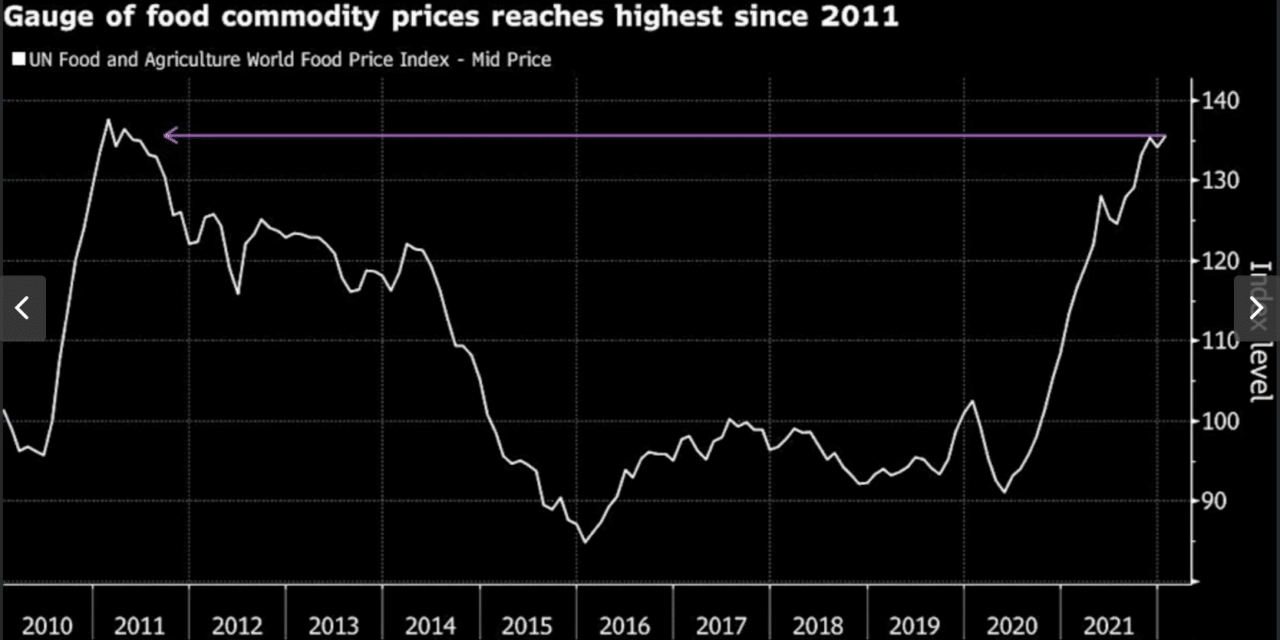Global food prices jumped toward a record last month, further adding to the surging cost of living for consumers. The United Nations’ index of prices rose 1.1% in January, pushed up by more expensive vegetable oils and dairy.
The gauge is edging closer to 2011’s all-time high, and unfavorable weather for crops and the fallout from an energy crisis threaten to keep prices high going forward. Inflation has been running rampant across the globe, and the latest leg higher in the UN’s food index could further stretch household budgets.
The commodities tracked by the gauge are used in most grocery store products or fed to animals from which those items are produced. That’s particularly bad news for the poorest consumers and nations with the least disposable income. The poorest “segments in the population will feel the pinch the most,” Josef Schmidhuber, deputy director for markets and trade at the UN’s Food and Agriculture Organization, said by phone.
According to Bloomberg, “High energy costs and high food costs and high necessities — they account for a large part of their overall expenditures.” Sugar marked the only commodity that eased during the month, while costs for meat, grain, dairy, and vegetable oils rose.
Countries spanning Turkey to Paraguay are facing food inflation. Surging energy prices have bolstered the appeal of crop-based biofuels and raised the cost of fertilizers and fuel for farmers. That could force cutbacks on farm inputs, particularly in developing nations, which may increase reliance on crop imports if harvests falter, Schmidhuber said.
Crop supplies also face risks from bad weather and geopolitical tensions. A dry spell has hit South American soy fields, while palm oil prices have reached a record due to labor shortages and export restrictions. The possibility of conflict at the Ukraine border also has the market watching for any impact to Black Sea grain shipments.















